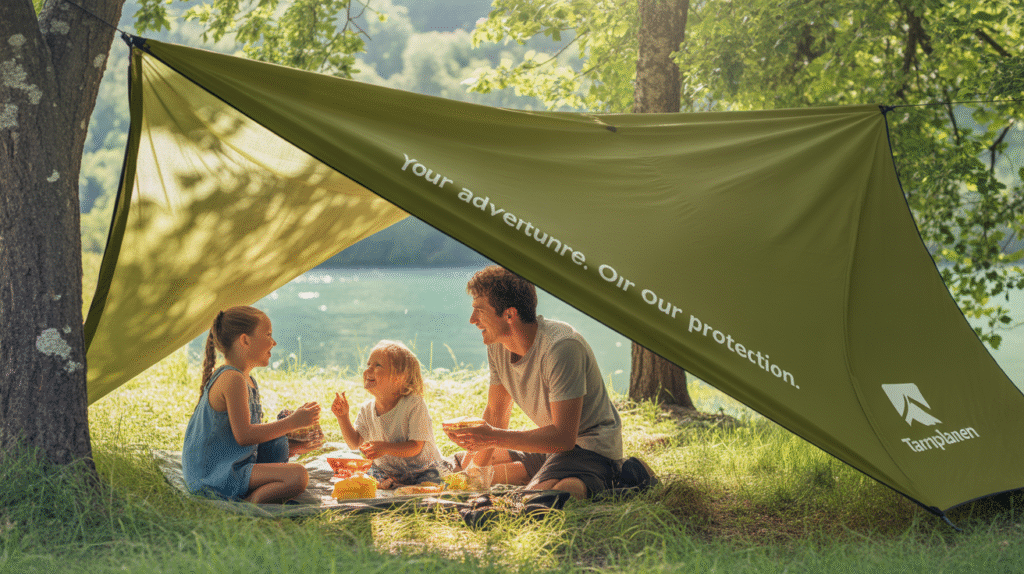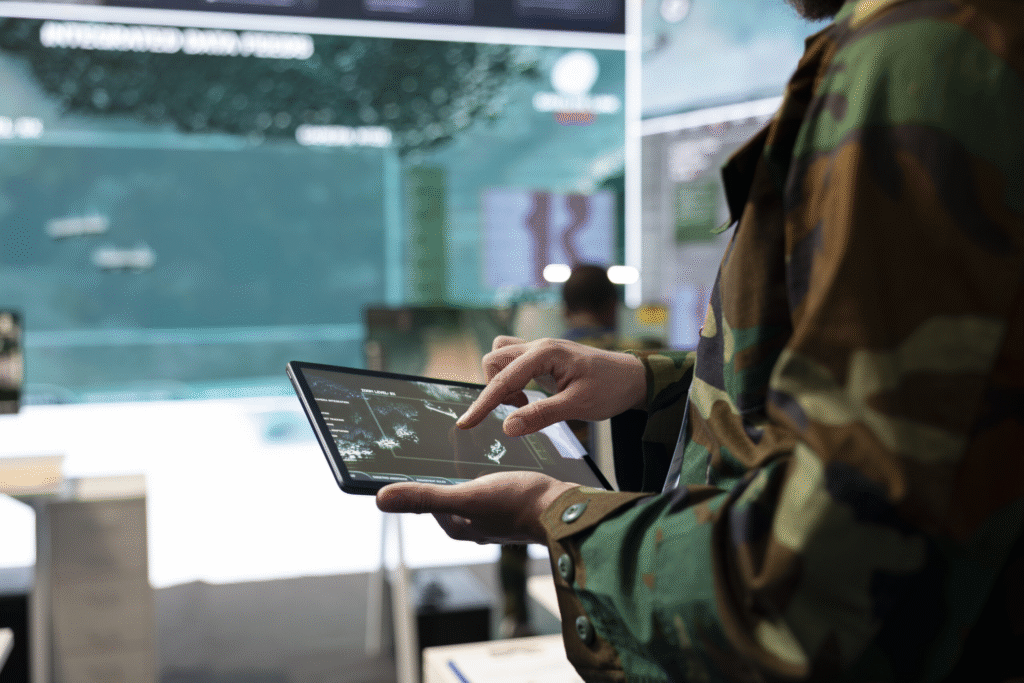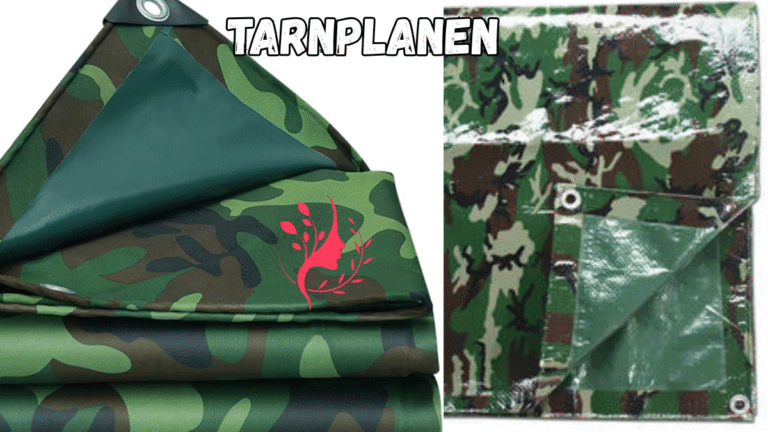In the world of military gear and outdoor survival equipment, one term stands out among enthusiasts, preppers, campers, and military surplus collectors alike — tarnplanen. This versatile and historical piece of equipment is more than just a tarp; it’s a symbol of function, design, and resilience.
But what exactly is tarnplanen? Why is it gaining popularity outside of military circles? And how can you utilize it in modern, practical settings?
This in-depth guide explores everything about tarnplanen, from its origins to its present-day relevance, showcasing why it might just be the most underrated survival gear out there.
What is Tarnplanen?
Tarnplanen refers to military-grade camo tarps that originated in Germany and other parts of Europe during the 20th century. These tarps were primarily used by military forces for concealing gear, creating temporary shelters, or camouflaging personnel and equipment.
Unlike ordinary tarps, tarnplanen are typically made from heavy-duty canvas or rubberized material, often featuring distinctive camouflage patterns such as Flecktarn, Splittertarn, or Strichtarn. These patterns not only help with concealment but also have a rich history in military design.
Today, tarnplanen are used for far more than just camouflage. Their durability and versatility have made them valuable in camping, bushcraft, survival training, tactical sports, and even interior design.
The Origins: Tarnplanen Through History
The evolution of tarnplanen is tightly linked with the development of camouflage in military operations. As early as World War I, armies recognized the need for concealment, but it was in World War II that camouflage tarpaulins became standardized gear.
German forces, in particular, innovated the use of tarnplanen not only as cover but as multi-purpose gear. These tarps were often designed to serve several roles:
- Shelter halves that could be buttoned together to form tents
- Ponchos or rain gear
- Ground covers or stretchers
- Camouflage for vehicles and weaponry
Their modular nature meant a single soldier could carry a tarp, but when combined with others, a group could build larger shelters or hide entire positions.
Why Tarnplanen Still Matters Today
While military needs have evolved, tarnplanen remain relevant and are even experiencing a resurgence in civilian use.

Tactical and Outdoor Functionality
Modern outdoor enthusiasts value gear that’s multifunctional. Tarnplanen meets that demand with features such as:
- Water-resistance and windproofing: Perfect for unpredictable outdoor environments.
- Durability: Unlike plastic tarps, military-grade canvas withstands rough terrain and long-term use.
- Color and camouflage: Ideal for discreet camping, wildlife observation, or tactical games like airsoft and paintball.
Historical and Collectible Appeal
Collectors are especially drawn to original tarnplanen from Cold War-era Eastern Europe or WWII Germany. These vintage pieces often include unique stamps, stitching styles, and camouflage patterns that reflect their origins and military units.
Sustainability and Upcycling
An emerging trend is the use of tarnplanen in sustainable fashion and design. Old canvas tarps are repurposed into:
- Durable backpacks
- Messenger bags
- Rugged furniture covers
- Fashionable jackets and accessories
Because of their robust materials and timeless patterns, tarnplanen-based products often outlast their synthetic counterparts.
Key Features That Define a True Tarnplanen
When shopping for a real tarnplanen, here are specific attributes to look for:
- Camouflage Pattern: Common patterns include:
- Flecktarn (post-WWII, West Germany)
- Strichtarn (East Germany/NVA “rain pattern”)
- Splittertarn (WWII Luftwaffe)
- Material: Heavy-duty cotton canvas or rubberized canvas.
- Grommets or Button Loops: For connecting multiple tarps or securing to the ground.
- Military Markings: Serial numbers, unit stamps, or maker’s marks.
Authentic tarnplanen will often have wear, fading, or repairs, adding to their character and story.
Modern Uses for Tarnplanen in Civilian Life
Tarnplanen’s utility has gone far beyond the battlefield. Let’s explore how different communities incorporate this gear into their lifestyles.

Survivalists and Preppers
For preppers, tarnplanen are ideal for bug-out bags and emergency shelters. Their camouflage reduces visibility, and their durability ensures longevity in austere environments.
Campers and Hikers
Used as a groundsheet, rain shelter, or hammock cover, tarnplanen stands up to the elements without fail. Some hikers even convert them into bivy sacks or lean-to shelters for minimalist setups.
Hunters and Wildlife Observers
In natural camouflage, hunters use tarnplanen to construct blinds or conceal game trails. The non-reflective material doesn’t spook wildlife, and it withstands long stays in rough terrains.
Airsoft and Paintball Enthusiasts
Reenactors and airsoft players utilize tarnplanen not just for shelter but for authenticity. Whether as part of a base camp or field barrier, the correct pattern can elevate an entire event’s realism.
DIY Projects and Crafts
Creative minds use vintage tarnplanen to make one-of-a-kind items. Upcycled bags and jackets made from military canvas are popular in streetwear and artisanal markets.
Tarnplanen vs. Modern Tarps: Why the Difference Matters
| Feature | Tarnplanen | Modern Tarps |
|---|---|---|
| Material | Cotton canvas, rubberized | PVC, polyethylene |
| Durability | Long-lasting, repairable | Lightweight but tear-prone |
| Aesthetic | Military camo, vintage look | Bright colors, utilitarian |
| Environmental Impact | Biodegradable, upcyclable | Often non-recyclable |
| Functionality | Multi-use (poncho, shelter) | Primarily shelter |
In many ways, the old-school tarnplanen outperforms new alternatives, especially for those who value ruggedness and aesthetic.
Where to Find Authentic Tarnplanen
Authentic tarnplanen can be found through:
- Military surplus stores
- Online marketplaces (e.g., eBay, Etsy)
- Tactical gear suppliers
- Outdoor gear expos and collector fairs
Prices vary based on condition, pattern rarity, and country of origin. Some pristine WWII pieces can fetch high collector prices, while East German tarps are more affordable and still practical.
When buying, ensure you’re not purchasing a replica unless that’s your intention. Replicas may be cheaper but usually lack the material quality of originals.
Maintenance and Care
Tarnplanen, while durable, do require proper care to last:
- Cleaning: Use mild soap and cold water. Avoid machine washing or harsh chemicals that can degrade fabric or fade camo.
- Storage: Store in a dry, cool place. Avoid direct sunlight to prevent fading and mildew.
- Repairs: Tears or worn edges can be patched using canvas repair kits or sewing.
A well-maintained tarnplanen can last decades — often outliving modern synthetic gear.
The Cultural Impact of Tarnplanen
Interestingly, tarnplanen is no longer just about function. It has become a symbol in art, fashion, and design.
From Berlin street fashion to Japanese functional apparel brands, tarnplanen-inspired materials and aesthetics have influenced a rugged, utilitarian trend.
Artists and installation designers also use vintage camo tarps in immersive exhibits, exploring themes like war, identity, concealment, and survival.
This crossover between military surplus and creative expression shows that tarnplanen is more than gear — it’s a cultural artifact.
Conclusion: Tarnplanen for a Modern World
Though born from war and function, tarnplanen has transitioned into a multifaceted tool for modern life. Whether you’re a survivalist, camper, artist, or collector, there’s a place for tarnplanen in your world.
Its unique blend of history, design, and function makes it a standout item in any gear kit or fashion collection. As sustainability and longevity take center stage in product choices, it’s no surprise that this humble camo tarp is back in the spotlight.
The next time you see one folded on a surplus store shelf or transformed into a rugged urban backpack, remember — that’s not just a tarp. That’s tarnplanen.
For more information visite the website

